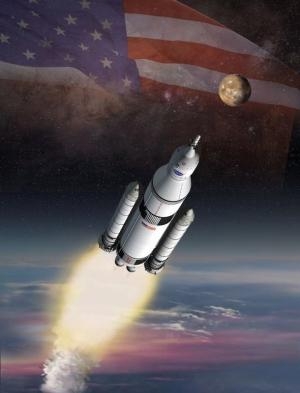Fri, Dec 13, 2013
ATK Achieves 'Significant Milestone' As Booster Integrator
NASA and ATK have successfully completed two key avionics tests for the solid rocket boosters for the space agency's new heavy lift rocket, the Space Launch System (SLS). The avionics tests, called hot fires, operate the booster's thrust vector control (TVC) system as if the booster were actually launching the SLS on a mission. The tests were conducted at ATK's Promontory, Utah, facility and represent a significant milestone as well as validation of SLS cost-saving efforts. As booster integrator, ATK has diligently focused on cost improvements for NASA's deep space exploration program to deliver affordable innovation.

"ATK has integrated value stream efficiencies across our SLS booster supply chain to achieve significant cost improvements," said Charlie Precourt, vice president and general manager of ATK's Space Launch division. "As such, we have been able to design, develop, test and streamline operations as we prepare for the first launch in 2017."
The new, advanced avionics system is a critical aspect of the twin SLS boosters, providing power distribution, communication with the flight computers, booster ignition, command and control of the booster steering system and booster staging. The tests simulated SLS launch sequences both in preflight checks and in an ascent profile by verifying communication between ground and flight systems, starting motor ignition and moving the TVC system. The successful testing validated the new SLS booster avionics subsystem and electronic support equipment (ESE). Training and evaluating the test team was an additional component of the test as team members were subjected to a variety of atypical conditions during simulated countdowns and firings. People, processes and tools were evaluated to strengthen and enhance performance at launch. "Knowledge transfer is one of the most critical aspects of the avionics test and one of the most rewarding," said Precourt. "It's inspiring to see our early career employees train
on this modernized system, armed with knowledge passed on to them by our world-class Space Shuttle team."
Other test objectives included validating the new electronic support equipment that replaced heritage ground equipment. Much of the equipment replaced was designed and built during the mid- to late-1970s and was successfully used on all 53 of the Space Shuttle Reusable Solid Rocket Motor and three 5-segment development motors static motor firings. The innovative equipment demonstrated in these tests dramatically reduces cost and increases reliability of the booster system.
(Image provided by NASA)
More News
Aero Linx: JAARS Nearly 1.5 billion people, using more than 5,500 languages, do not have a full Bible in their first language. Many of these people live in the most remote parts of>[...]
'Airplane Bounced Twice On The Grass Runway, Resulting In The Nose Wheel Separating From The Airplane...' Analysis: The pilot reported, “upon touchdown, the plane jumped back>[...]
"Burt is best known to the public for his historic designs of SpaceShipOne, Voyager, and GlobalFlyer, but for EAA members and aviation aficionados, his unique concepts began more t>[...]
"Polaris Dawn, the first of the program’s three human spaceflight missions, is targeted to launch to orbit no earlier than summer 2024. During the five-day mission, the crew >[...]
There Are SO Many Ways To Get YOUR Aero-News! It’s been a while since we have reminded everyone about all the ways we offer your daily dose of aviation news on-the-go...so he>[...]
 ANN's Daily Aero-Linx (05.04.24)
ANN's Daily Aero-Linx (05.04.24) NTSB Final Report: Quest Aircraft Co Inc Kodiak 100
NTSB Final Report: Quest Aircraft Co Inc Kodiak 100 Aero-News: Quote of the Day (05.04.24)
Aero-News: Quote of the Day (05.04.24) Aero-News: Quote of the Day (05.05.24)
Aero-News: Quote of the Day (05.05.24) Read/Watch/Listen... ANN Does It All
Read/Watch/Listen... ANN Does It All



